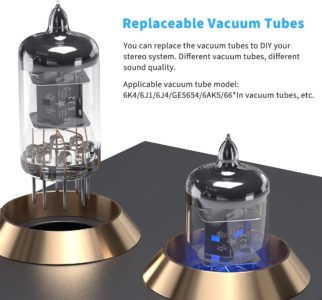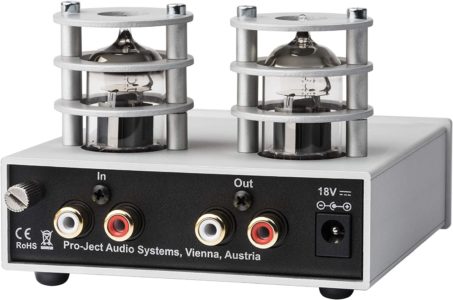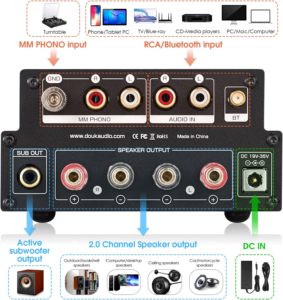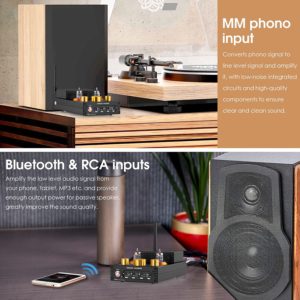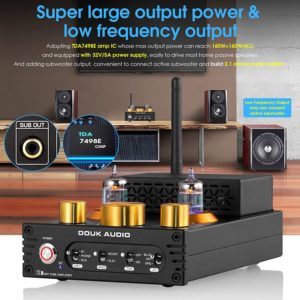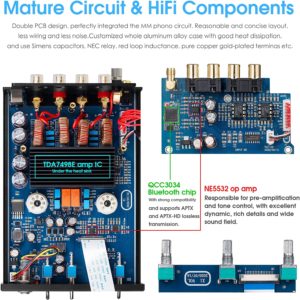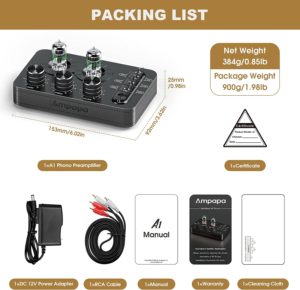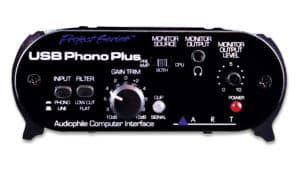Features to Consider Before Buying a Tube Phono Preamp
Here are some important features you need to consider before buying a quality tube phono preamp according to your requirements.
Do You Need a Tube Phono Preamp?
If you have a stereo amplifier called a turntable, it might not come with a tube phono preamp. Therefore, you won’t be able to pay for any of those vinyl records if you don’t have this important component.
It can be handy when upgrading the sound beyond what some amplifiers and record players can manage. But you do need to remember that there is nothing that puts tube phonos ahead of its solid-state counterpart.
A solid-state is a better option if you are looking for better results. But that doesn’t mean buying a tube phono preamp is a waste of money.
This device can give you the most audible change that you can get. You will be able to get the sound from those records as the producers intended them.
These devices are standalone analog, and they are designed to boost electromagnetic signals that are received from a player’s cartridge. It then converts that signal into a line-level output.
Now, discuss the features you must consider before buying a tube phono preamp. These features will enable you to find the best options that suit your needs.
Phono Cartridge
A phono cartridge is a mechanism that can hold the stylus and translates those grooves from a vinyl record and turns them into a signal that can be a sound. Each turntable comes with a cartridge, or they won’t have any sound.
These cartridges are called carts. The cartridges have different parts, including coils, pole pieces, magnets, cantilever, rubber suspension, and stylus.
These cartridges come in different kinds, including moving magnet cartridges and moving coil cartridges. There are different types, including micro-ridge, elliptical, spherical, and hyper-elliptical.
Filters
These devices come with subsonic filters. These filters remove any inaudible vibrations of a low frequency and are often called rumble. This rumble results from the warped records or the bearings of a turntable.
The rumble might be inaudible, but it does cause an unwanted movement in the speaker cone, resulting in distortion within audible frequencies.
These filters won’t harm your system’s base response. But users have mentioned that in some preamps, they do so. Therefore, you need to look for these subsonic filters that are not harmful to the system or device.
Solid State vs. Tube
The primary difference between the two is that tube amps tend to use vacuum tubes for amplification. On the other hand, solid-state preamps use electronics for this purpose.
But there is an audible difference between the two which is why one is preferred over the other. Tube preamps tend to be warm and sound engineers recognize it immediately as they hear it.
Whereas the sound of a solid-state preamp largely depends on its circuitry. Musicians and sound engineers consider these preamps inferior, but these docs have theory one advantages.
Advantages of Tube Preamps
Response
Tube preamps not only have overdrive and tune advantages, but these devices come with response advantages. You will get subtly different sounds with a vacuum tube. Solid-state preamps tend to be more on the crisper side, and they don’t respond to the nuances of a player.
Clear Sound
Being warm, most musicians love the sound from a tube phono preamp. The sound you will hear in front of his device will be extremely clean if played softly. But the heavily accented tone will have a slight distortion.
Some people prefer to go for a crispier sound; it doesn’t matter how hard they want to play. Therefore they go for a solid-state preamp. But if the clear sound is the most important aspect, you should consider going for the tube preamp.
Disadvantages of Tube Preamps
Not That Crispy Sound
Most musicians don’t prefer to go for these preamps because they don’t sound as crisp as their solid-state variants.
More Expensive
These preamps are more expensive as compared to their solid-state variants. So, most hobbyists go for the solid-state variants. These are more suitable for professionals.
Advantages of Solid-State Preamps
More Durable
Solid-state preamps are much more durable as compared to tube preamps. Tube preamps are made of glass, and there is a constant risk that these tubes can break upon impact. This is especially the case if you take your preamp on the road. But the solid-state preamps are more durable as they are circuit-based.
Less Expensive
It’s one of the biggest advantages of a solid-state preamp as it is much cheaper than its tube variant. The solid-state preamps are circuit-based. Therefore, they are much cheaper to produce than their tube variants.
More Sound Options
In recent years, solid-state preamps are becoming more and more advanced as they are equipped with more features.
As they have circuitry, manufacturers have started adding more inbuilt effects. Therefore, you won’t need any extra effect pedals either.
Disadvantages of Solid-State Preamps
Slightly Low on The Sound Quality
These preamps are slightly low on sound quality. They might sound a bit crisper than tube preamps, but they are much better overall.













